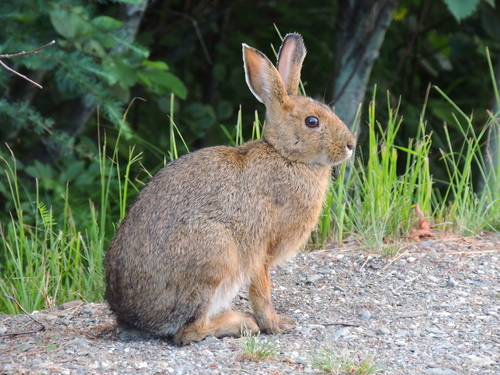
Snowshoe Hare
The snowshoe hare, with its shape-shifting fur and oversized feet, thrives in North America's boreal forests. Its seasonal color change from brown to white provides perfect camouflage, while its swift movements help evade predators, making it a vital link in the ecosystem's food chain.
Least Concern
Conservation Status
Stable
Population Trend
Characteristics
Lepus americanus, commonly known as the snowshoe hare, is notable for its seasonal fur color change, which shifts from brown in summer to white in winter for camouflage. It inhabits boreal forests across North America and has large hind feet that help it move swiftly across snow. Known for its nocturnal and crepuscular habits, the snowshoe hare plays a crucial role in the food web as prey for various predators.
Distribution Range of the Snowshoe Hare
Lepus americanus, commonly known as the snowshoe hare, is native to North America. Its geographical distribution includes regions across Canada, Alaska, the northern United States, and parts of the Rocky Mountains. Specific countries where it is found include the United States and Canada.
Snowshoe Hare's Habitat
Environmental Conditions
The snowshoe hare typically inhabits boreal forests, also known as taiga, characterized by cold climates and dense coniferous forests. It is also found in mixed and deciduous forests, swamps, and thickets, often in areas with dense underbrush that provides cover from predators. The climate in these regions features long, cold winters and short, mild summers.
Ecological Niche
Lepus americanus is primarily herbivorous, feeding on a variety of vegetation including grasses, ferns, and leaves during the warmer months, and twigs, bark, and buds during the winter. Its adaptations for survival in snowy environments include large hind feet that prevent sinking into the snow and a seasonal change in fur color from brown in the summer to white in the winter, providing camouflage against predators.
Copyright @ Nature Style Limited. All Rights Reserved.
 English
English